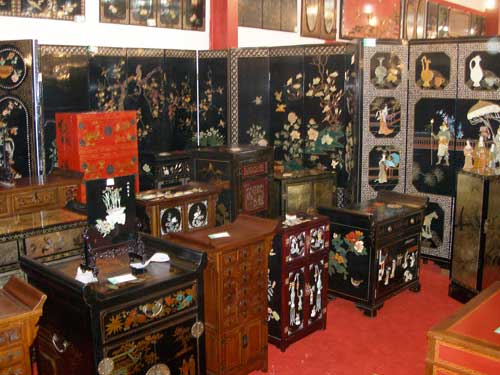
An array of styles
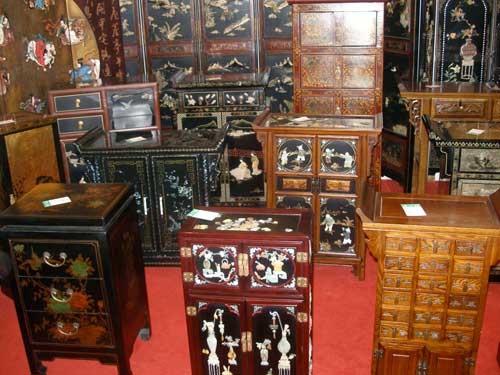
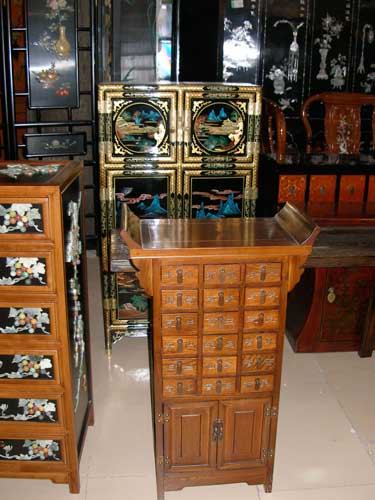
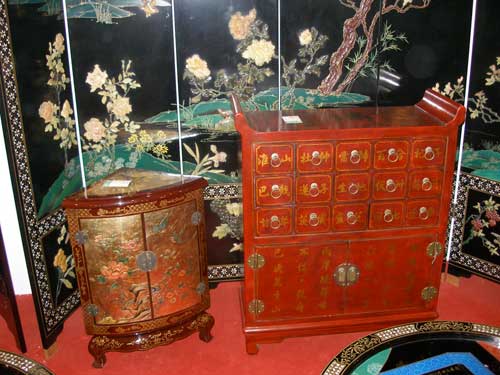
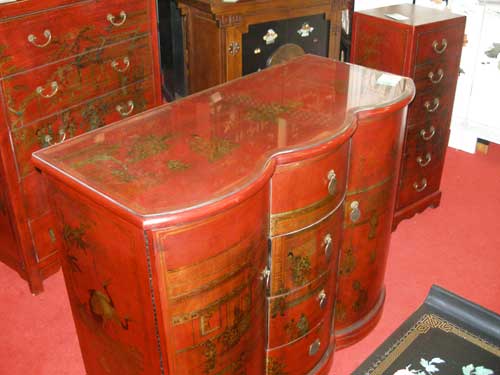
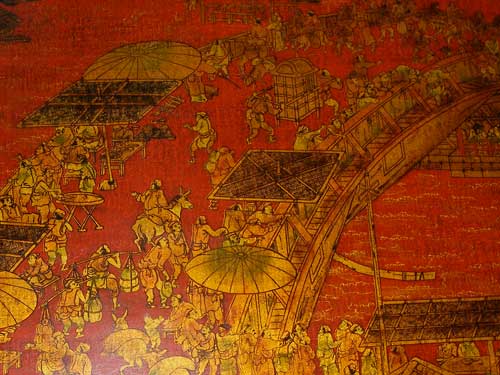
The Mongolian style uses inlaid leather and rosewood.
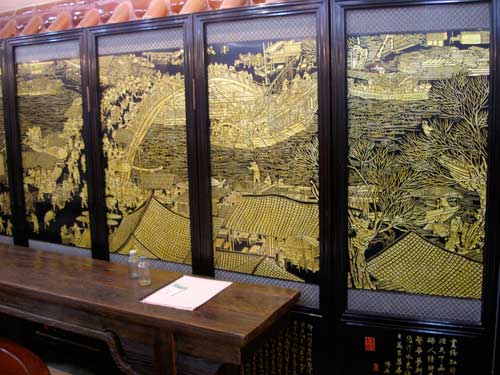
This gold-leaf screen costs $40,000. It has 100 layers of lacquer.
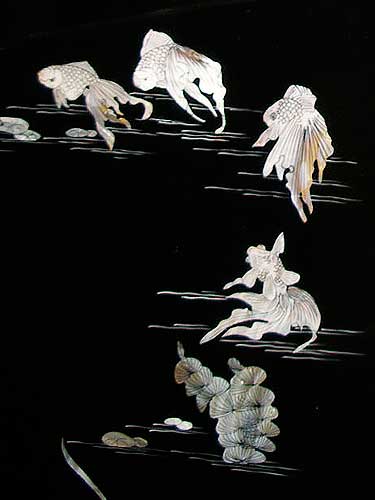
This mother of pearl piece was made using 30 layers of black lacquer on pine, then placing the inlay, and then 5 coats of clear lacquer.
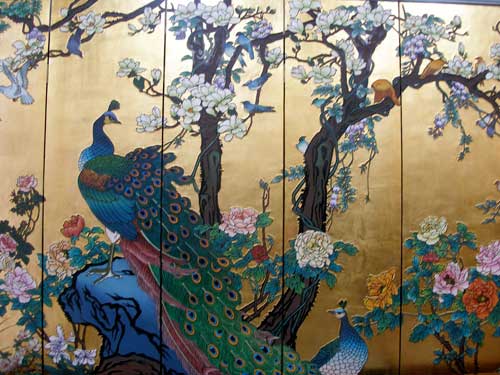

Mao holds a place of honor
This is a small replica of a screen called "Chinese Symphonic Picture Riverside Scene at Qingming Festival." It shows the people celebrating the Qingming Festival on the banks of the Bian River in the suburbs around the capital, Pien Jing (today's Kaifeng), during the Huizong period of the late North Song Dynasty (1127 - 1279).
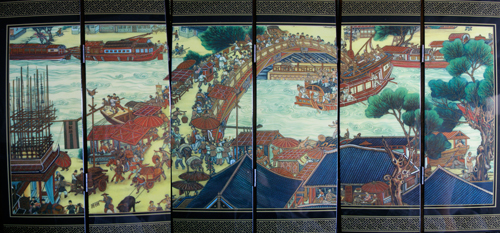
An overview of one side of the screen. (It is interesting to note that the Mongolian style furniture and the gold-leaf screen from above both depict this exact same scene.)
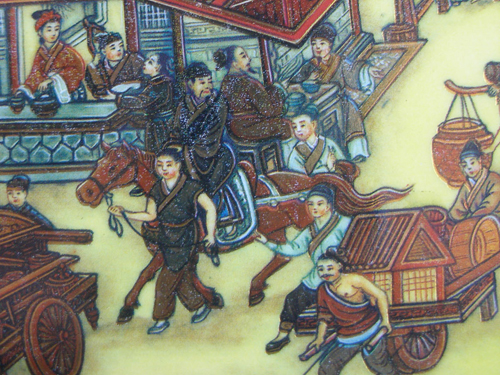
The screen contains a wide variety of scenes depicting local life.
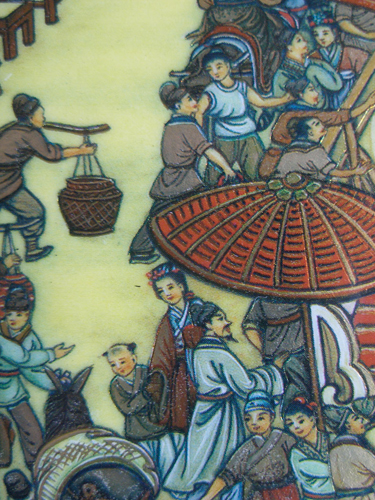
The people are of all ages and classes.
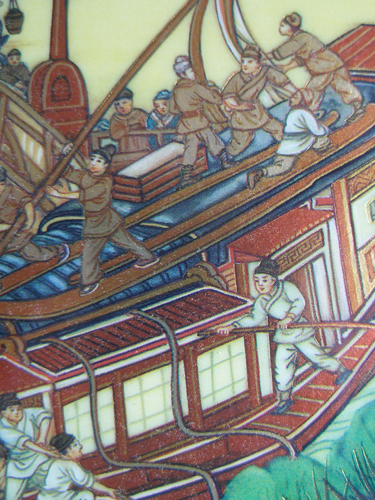
Boats cruise the river.
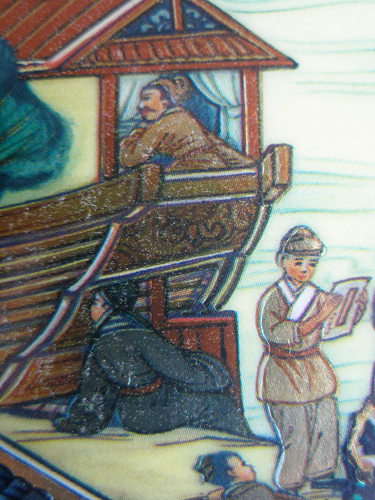
Xi'an was the starting point of the Silk Road, an extensive interconnected network of trade routes connecting Asia with Europe. Extending over 4,000 miles, the routes enabled people to transport goods, especially luxuries such as slaves, silk, perfumes, spices and medicines, as well as being a conduit for the spread of knowledge and cultures.
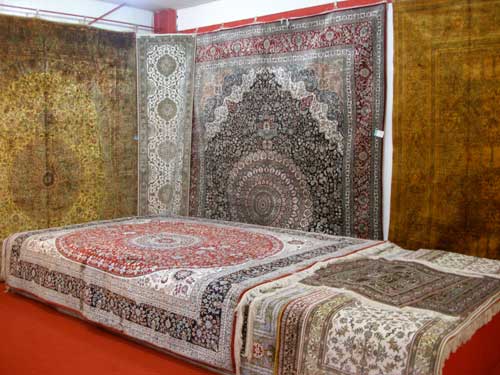
Silk rugs
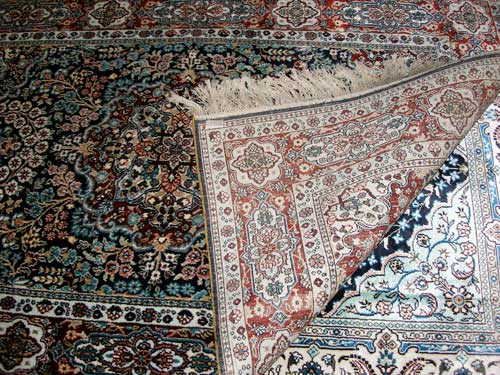
With real silk, the back has a different color than the front.
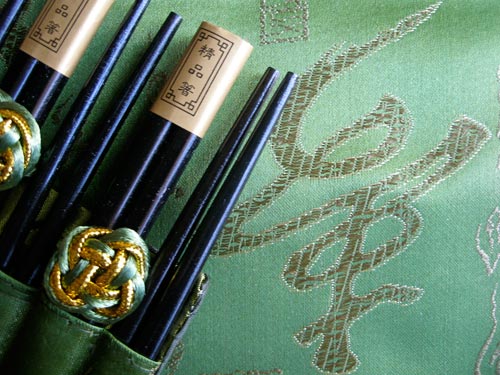
A decorative silk placemat, complete with chopsticks
Big Wild Goose Pagoda:
Around the year 630, a monk named Xuanzang left this area when he was 28 years old. After one year of walking, he arrived in India, the cradle of Buddhism. He spent the next 17 years traversing 100 countries. Eventually he returned with 600 scriptures and statues. The Big Wild Goose Pagoda (Dayangta) was built in 652 during the Tang Dynasty to house them.
The pagoda is located within the Da Ci'en Temple complex. In 648, to commemorate the deceased Empress Wende, royalty ordered the building of this temple (whose name means Mercy and Kindness).
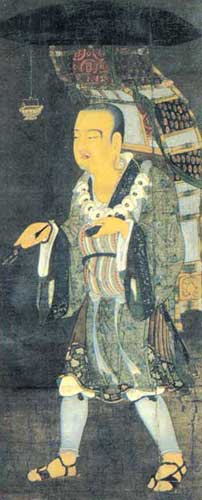
Xuanzang, weighed down by a heavy pack, was known for his extensive and careful translations of Indian Buddhist texts into Chinese.
As for the pagoda's name, according to ancient stories, there were two branches of Buddhism, one of which was allowed to eat meat. One day, the monks couldn't find any meat to buy. Upon seeing a group of big wild geese flying by, one said to himself: 'Today we have no meat. I hope the merciful bodhisattva will give us some.' At that very moment, the leading wild goose broke its wings and fell to the ground. All the monks were startled and believed that bodhisattva showed his spirit to order them to be more pious. They established a pagoda where the wild goose fell and stopped eating meat.

The sturdy brick building is seven stories tall and over 200 feet tall.
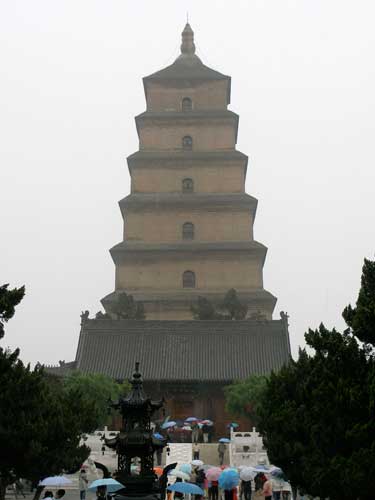
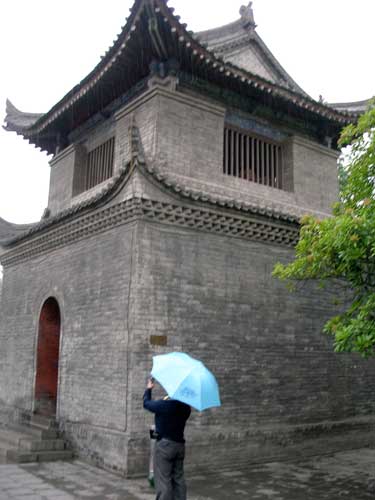
The bell tower was used every morning to report time.

Inside the tower hangs an iron bell weighing 15 tons. It was molded in 1548 during the Ming Dynasty.
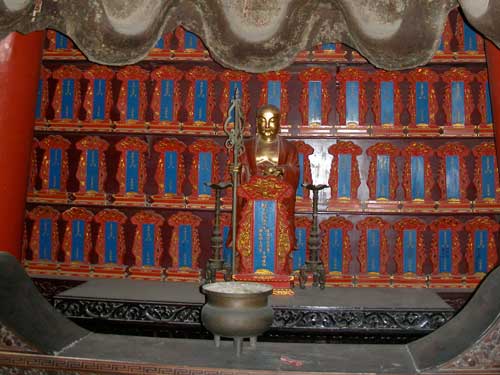
The temple complex was filled with sensational artwork.
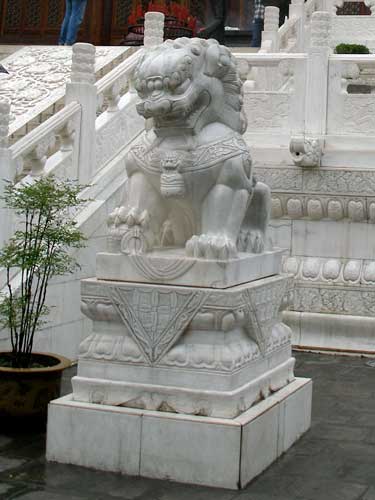
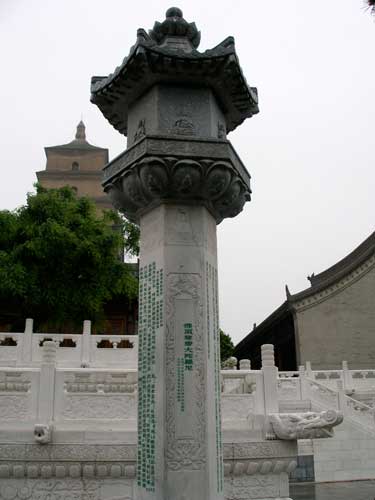
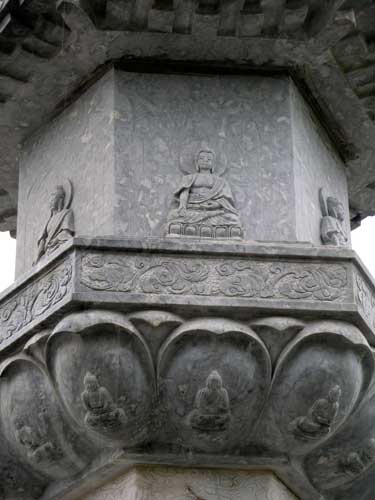
The bottom petals represent the lotus flower.
The climb to the top of the pagoda was not necessarily a stable one. With a twisting staircase and loose boards, it became somewhat of an adventure.
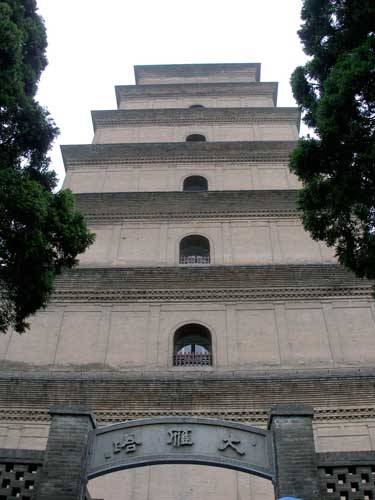
A long way up!
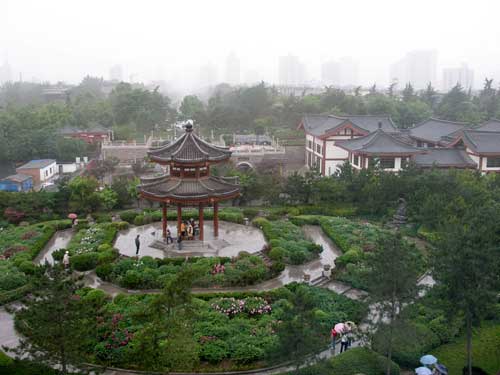
A view down at the gardens
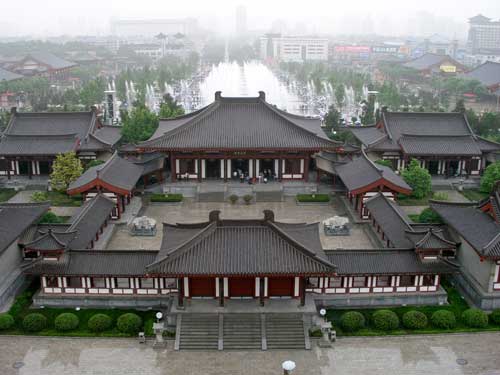
Some temple buildings and the musical fountain
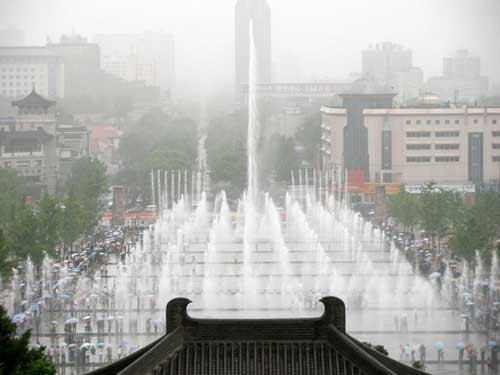
This is the largest musical fountain square in Asia. The water reaches heights of 160 feet.
The water jets have 22 different styles (low or high, wide or thin, straight or inclined, etc) that are timed to different music. In the evening, lights are added. There used to be a park around the temple with a beautiful lake, but two years ago everything was changed and was more 'modernized'.
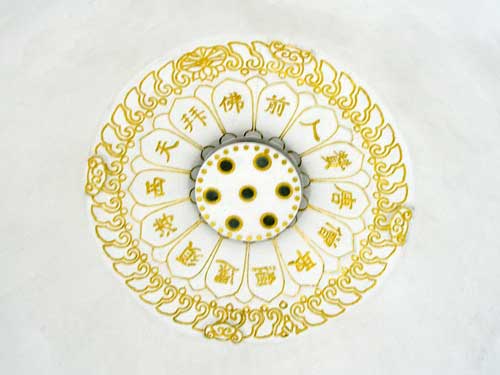
This emblem on the ceiling marks the top of the pagoda.
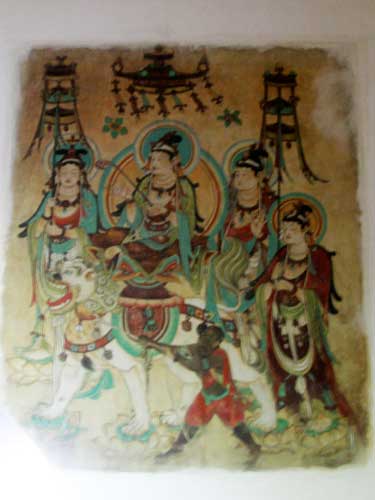
Some of the artwork painted on the walls
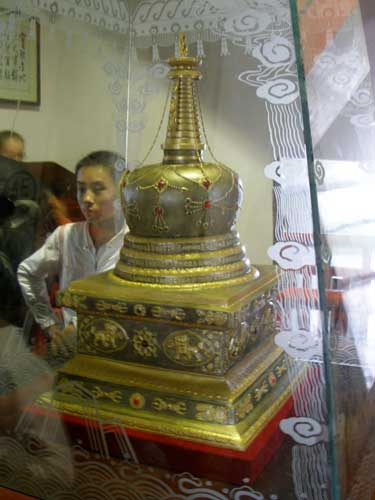
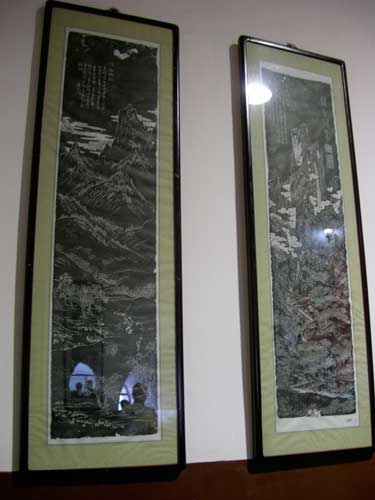
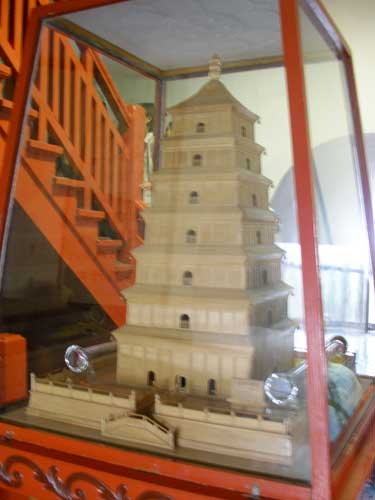
A model of the pagoda, with two important scrolls at its sides
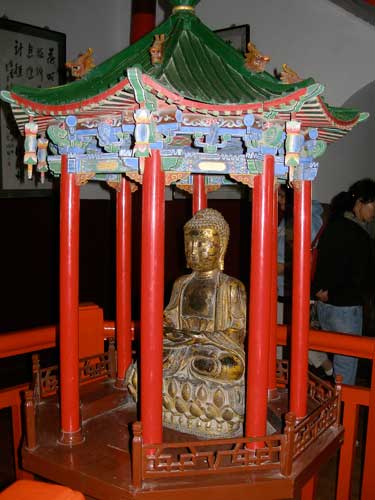
A statue of the Buddha
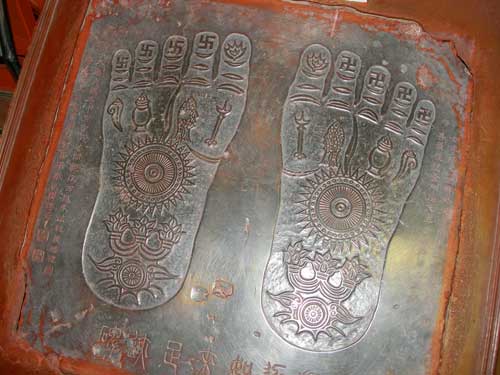
This stone tablet has the footprints of Tathagata Buddha.

